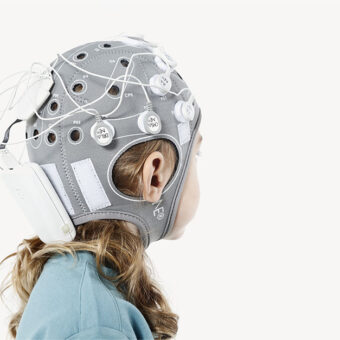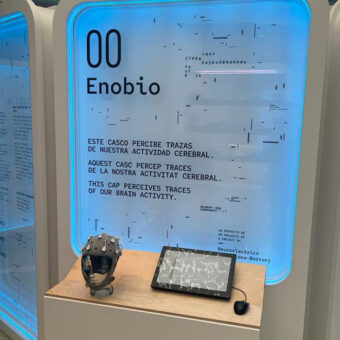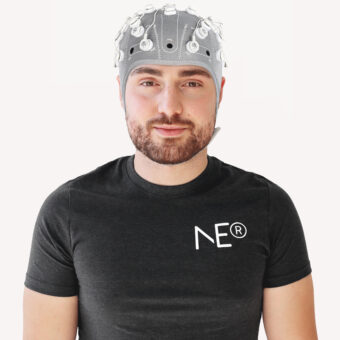All of us who deal with EEG signals know how important artifacts are. EEG is one of the biological potentials with lowest amplitude (typically a few microvolts), which makes it highly sensitive to be contaminated by undesired interferences, known as artifacts. We can find several artifacts sources such as be biological (recorded activity from other sources than the brain, i.e. the heart, muscles or eye movements), electromagnetic (interferences from other electronic equipment or mains noise) and others derived from head movements or changes in the skin-electrode interface. In general we can manage artifacts in two ways: detecting their appearance and remove the entire contaminated EEG sequence or cleaning artifacts interference from the recorded EEG signal, this last technique known as artifact correction.
One of the most relevant artifacts that pollute EEG recordings comes from interferences from eyes and eyelid movements. The closer to the eyes an electrode is placed, the more it is affected by these ocular artifacts. Among EOG artifacts the most relevant ones are eye-blinks. These interferences can be in the order of hundreds of micro-volts while artifact free EEG is the order of tens of micro-volts. Ocular artifacts contaminate the EEG in the band ranging from 0 to 15 Hz interfering with three of the most commonly used EEG bands, Delta, Theta and Alpha.
There are many techniques to correct artifacts, in this post I introduce three of the most commonly used. However none of them is perfect and researchers are still devoted to find mathematical methodologies to robustly subtract these interferences from EEG recordings. To this effect, EEG set-ups usually include electrodes to record EOG signals that are usually placed above/below eyes (Vertical EOG artifacts) and next to them (Horizontal EOG artifacts). These techniques are an example of currently accepted EOG correction techniques, however, there are many more such as neural networks, wavelet analysis…

Linear Regression
Linear regression methodologies have been largely used for EOG correction in EEG time series. It is no doubt one of the simplest methods to remove ocular interference. Its main constraint is that they require measured ocular interference to be linear dependent and normally distributed, which in general is not the case. Linear regression coefficients are calculated during a calibration process in which it is assumed that the signal of the blinks and the eyes movements is orders of magnitude higher than the EEG signal and that these interferences can be measured in EOG electrodes. For each EEG channel the linear combination of the EOG channels that maximizes its ocular interferences is calculated. Therefore to clean the EEG, the calculated linear combination of EOG electrodes is subtracted. One of the main advantages of this method is that it has online capabilities, its main disadvantage is that sometimes it is not accurate enough and that if not well parameterized can dirty the recording.
Independent Component Analysis
Blind source separation (BSS) addresses the significant problem of finding a suitable representation of multivariate data. Independent component analysis separates a multivariate signal into additive independent components. This is done by assuming that the components are non-Gaussian signals and that they are statistically independent from each other. ICA delivers in the best case as many components as EEG channels and the corresponding transformation matrix to get these components. When applying ICA to an EEG time sequence, ocular artifacts generate in general independent components. These components can be identified due to their similarity with EOG channels. If these components are correctly tag and removed, we can reconstruct our EEG measurement free of EOG interferences. ICA is a popular method for the removal of eye-movement artifacts, and it has received considerable attention due to the fact that can account for multiple and independent artifact sources. In Kroupi 2011 subspace projection and adaptive filtering EOG correction methodologies are compared. The paper performs a comparative study of the performances of several methods using two measures, namely the mean square error (MSE) and the computational time of each algorithm. According to this study, ICA methods appear to be the most robust but not the fastest ones.
Principal Component Analysis
Principal component analysis (PCA) methodologies use an orthogonal transformation to transform and EEG sequence into a set of linearly uncorrelated signals, known as principal components. The procedure is similar as in ICA. We should identify which components corresponds to ocular artifacts and reconstruct the EEG removing these components.



